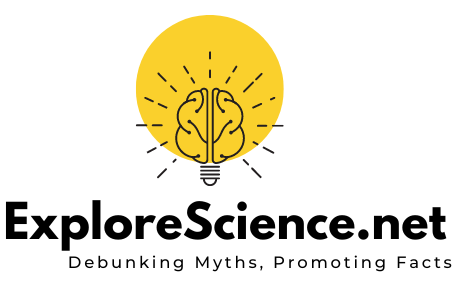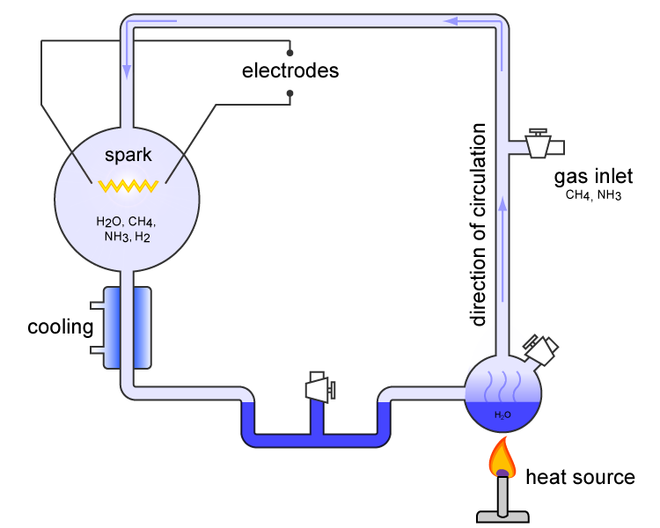Biomolecules, the building blocks of life, make up the complicated web of existence that distinguishes living organisms. From the tiniest bacteria to the most complex multicellular organism, biomolecules govern life’s processes. But how did these important components come to be? The search to understand the origins of biomolecules leads us through Earth’s history and the glories of evolutionary chemistry.
The Cradle of Life.
The primordial soup theory, presented by scientist Stanley Miller in the 1950s, contends that the early Earth’s atmosphere, which was rich in gases such as methane, ammonia, water vapour, and hydrogen, served as the ideal cauldron for chemical reactions to take place. Under powerful energy sources such as lightning, volcanic activity, and UV radiation, basic molecules could have evolved into more complex structures, providing the framework for life’s origin.
 |
| Experiment: Miller and urey |
From Simple to Complex
In the earliest soup, simple organic molecules such as amino acids (NH3), nucleotides, sugars, and lipids started assembling into more complex structures. Amino acids, the building blocks of proteins, can polymerize into peptides, which then create proteins, the foundation of biological operations. Nucleotides, the building blocks of DNA and RNA, can self-assemble into genetic material capable of conserving and transmitting information about hereditary
O.
|
H – C – O – P – O
| |
H – C – C – O
| |
N O
/ \
N N
/ \
H H
Beyond Earth: The Cosmological Context
The endeavour to comprehend the origins of biomolecules goes beyond Earth. Astronomers and astrobiologists search throughout space for evidence to the biological origins of life. The interstellar clouds, comets, and meteorites harbour complex organic compounds, implying that the components for life are spread beyond the universe.
The Function of Catalysts: Enzymes and Ribozymes
Catalysts play a critical component in the complicated symphony of bio molecular synthesis by speeding up chemical procedures and directing molecular assembly. Enzymes are specialised proteins with catalytic activity that control the synthesis and breakdown of biomolecules with extraordinary precision. Ribozymes, RNA molecules capable of catalysing processes, shed light on the RNA world paradigm and the early evolution of life.
Biomolecules, the building blocks of life, make up the complicated web of existence that distinguishes living organisms. From the tiniest bacteria to the most complex multicellular organism, biomolecules govern life’s processes. But how did these important components come to be? The search to understand the origins of biomolecules leads us through Earth’s history and the glories of evolutionary chemistry.
The Cradle of Life.
The primordial soup theory, presented by scientist Stanley Miller in the 1950s, contends that the early Earth’s atmosphere, which was rich in gases such as methane, ammonia, water vapour, and hydrogen, served as the ideal cauldron for chemical reactions to take place. Under powerful energy sources such as lightning, volcanic activity, and UV radiation, basic molecules could have evolved into more complex structures, providing the framework for life’s origin.
Biomolecular artists cautiously weave the building blocks of life, which are vital to the wonderful fabric of existence. From complex folds of proteins to the appealing helices of nucleic acids, biomolecules shape the essence of life. Their interactions, guided by the gentle touch of chemistry, result in the unbelievable complexity of living organisms, each a homage to the beauty and elegance of biomolecular structure.
Applications of Biomolecules
Biomolecules are evolving beyond biology to impact the environment around us, leading to new applications and future perspectives. From pioneering medical remedies to revolutionary biotechnologies, biomolecules are at forefront of advancement in science, guiding humanity to new frontiers of knowledge. As we gaze into the great expanse of the unknown, the future presents numerous possibilities for biomolecular study, enticing us to a world where drawbacks of existence are defined only by our imagination.




Informative